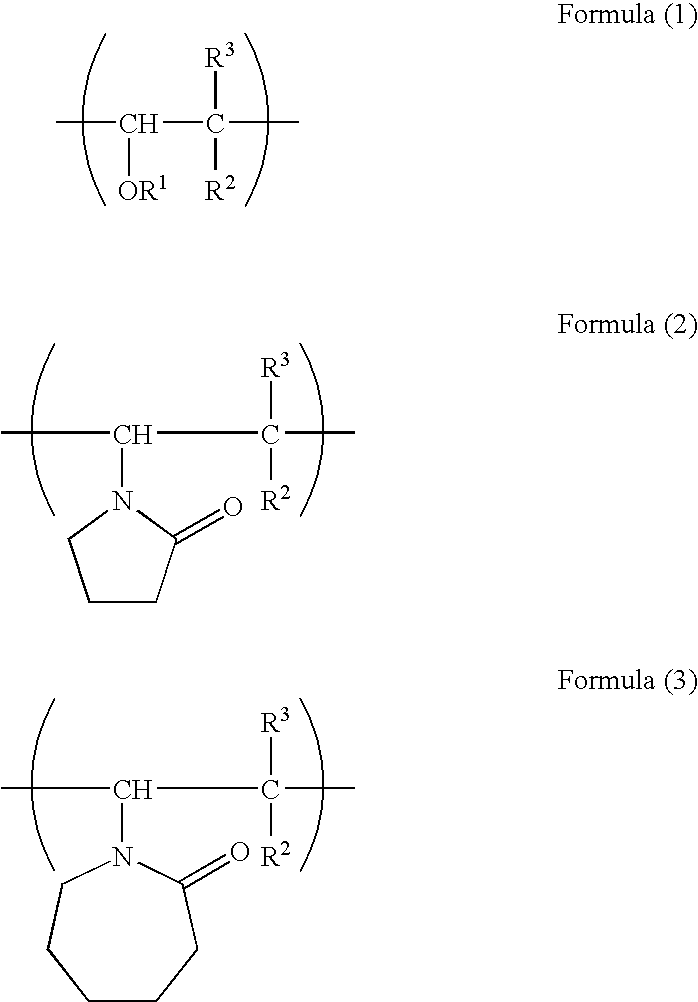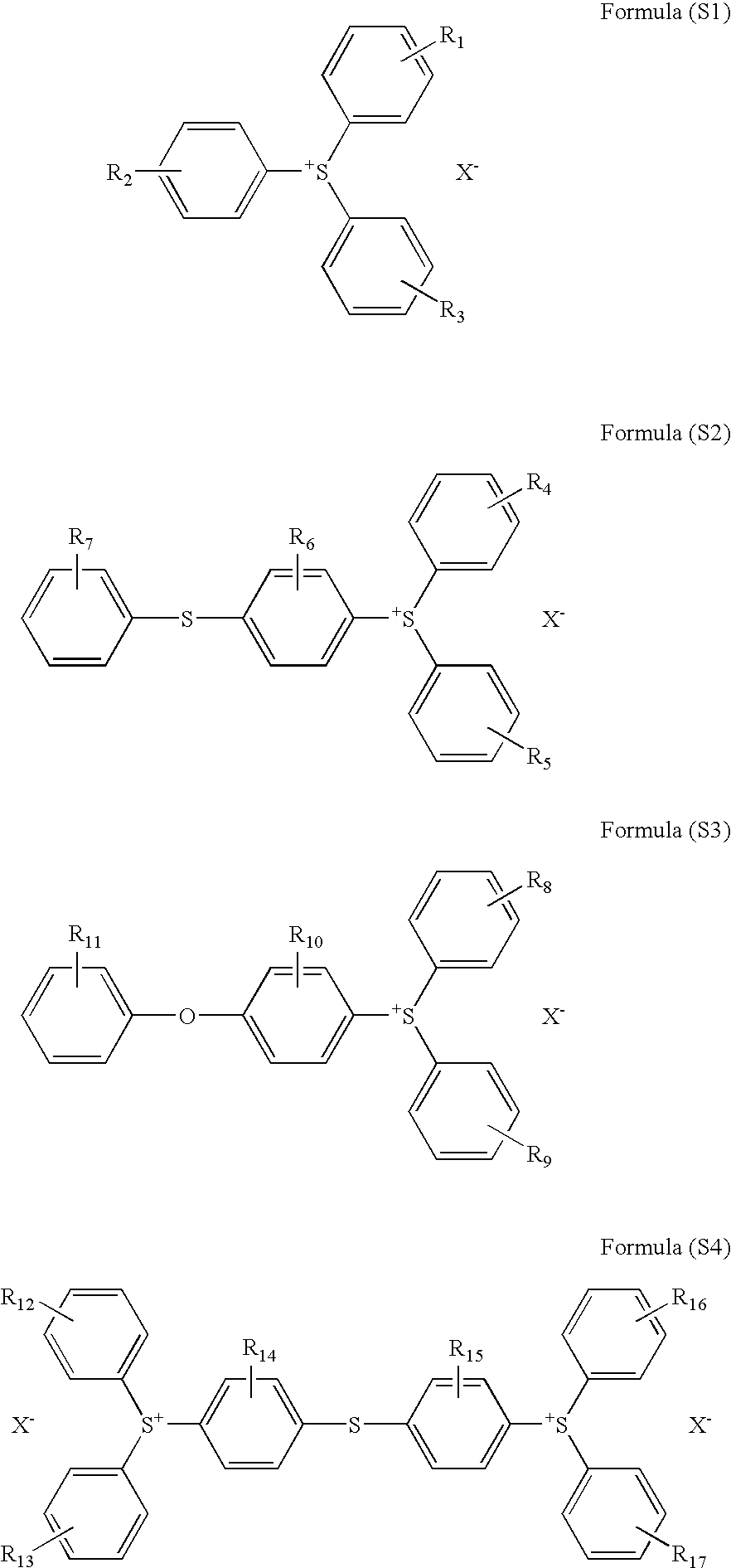Negative working light sensitive planographic printing plate material and planographic printing plate manufacturing process
a technology of planographic printing plate and negative working light, applied in the direction of auxillary/base layers of photosensitive materials, instruments, photosensitive materials, etc., can solve the problems of insufficient hardening of light sensitive layers at exposed portions, insufficient printing durability, and inability to achieve sufficient printing durability, etc., to achieve excellent water developability, high printing durability, and high sensitivity
- Summary
- Abstract
- Description
- Claims
- Application Information
AI Technical Summary
Benefits of technology
Problems solved by technology
Method used
Image
Examples
example 1
(Synthesis 1)
[0242] N-Vinyl pyrrolidone of 65.5 parts (0.59 mol %), 100 parts of ethanol and 1.23 parts of α,α′-azobisiso-butylonitrile were placed in a three neck flask under nitrogen atmosphere. The resulting mixture was reacted under nitrogen atmosphere for 6 hours at 80° C. in an oil bath, while dropwise adding 35.0 parts (0.41 mol %) of methacrylic acid.
[0243] After that, the reaction mixture was added with one part of triethylbenzylammonium chloride and 28 parts (0.2 mol %) of glycidyl methacrylate, and reacted at 25° C. for 3 hours. Thus, Polymer 1 as a polymeric binder was obtained. Polymer 1 had a weight average molecular weight of 55,000, measured according to GPC, and had an acid value of 95.
(Synthetic 2)
[0244] Methyl vinyl ether-maleic anhydride copolymer Gantrez AN-119 (produced by ISP Japan Co., Ltd.) of 64.0 parts (0.82 mol %), 100 parts of isopropanol, 1 part of triethylbenzylammonium chloride, and 28 parts (0.2 mol %) of glycidyl methacrylate were placed in a ...
example 2
[0269] Next, the following polymerizable light sensitive layer coating solution was prepared, and evaluation described later was made.
>Polymeric binder (Polymer 1)65.0partsCyanine dye-14.0partsPolymerization initiator (I)amount shownin Table 3Polymerization initiator (II)amount shownin Table 3Addition polymerizable ethylenically15.0partsunsaturated monomer (Compound A)Polyethylene glycol #200 dimethacrylate10.0parts(NK ESTER-4G, produced by Shinnakamura KagakuKogyol Co., Ltd.)Phthalocyanine pigment MHI 4543.0parts(produced by Mikuni Sikisosha, 30% MEK dispersion)Hindered amine stabilizer0.5parts(LS 770 produced by Mitusi Life-Tech Co., Ltd.)Fluorine-contained surfactant0.5parts(F-178K produced by Dainippon ink Kagaku Kogyo Co.,Ltd.)Cyclohexanone (bp. 155° C.)550partsIsopropyl alcohol350parts
[0270] A planographic printing plate material-sample was prepared in the same manner as in Example 1, except that the polymerizable light sensitive layer coating solution above was used. Thus, ...
PUM
| Property | Measurement | Unit |
|---|---|---|
| Tg | aaaaa | aaaaa |
| Tg | aaaaa | aaaaa |
| Tg | aaaaa | aaaaa |
Abstract
Description
Claims
Application Information
 Login to View More
Login to View More - R&D
- Intellectual Property
- Life Sciences
- Materials
- Tech Scout
- Unparalleled Data Quality
- Higher Quality Content
- 60% Fewer Hallucinations
Browse by: Latest US Patents, China's latest patents, Technical Efficacy Thesaurus, Application Domain, Technology Topic, Popular Technical Reports.
© 2025 PatSnap. All rights reserved.Legal|Privacy policy|Modern Slavery Act Transparency Statement|Sitemap|About US| Contact US: help@patsnap.com



